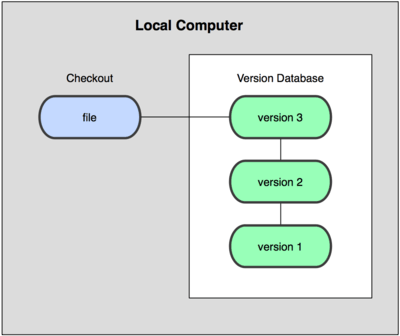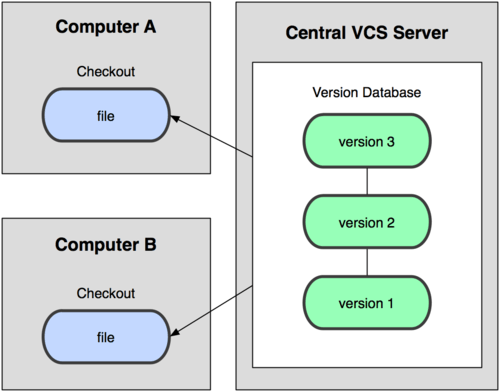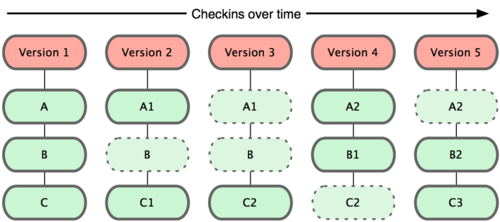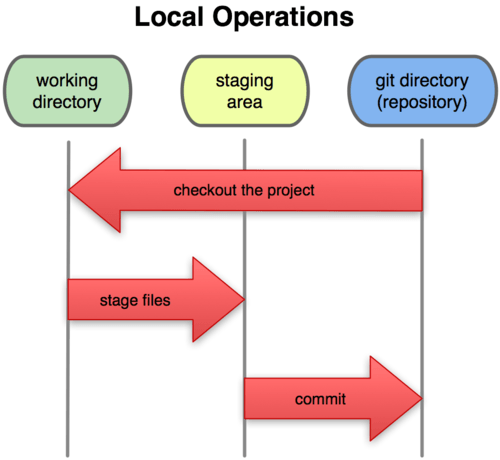- Gain familiarity with RStudio
- Describe how to generate a document in markdown and the R flavor of markdown
- Understand the basics of version control software using git
Microbial Informatics
Lecture 02
Patrick D. Schloss, PhD (microbialinformatics.github.io)
Department of Microbiology & Immunology
Learning objectives
What is Markdown (*.md)?
- "Markdown is a text-to-HTML conversion tool for web writers. Markdown allows you to write using an easy-to-read, easy-to-write plain text format, then convert it to structurally valid XHTML (or HTML)." - John Gruber
- The advantage is that you can read it as a text document and it will make sense and you can use conversion software to generate other file formats including html, pdf, docx
- Can be rendered using:
- A Perl script from Gruber
- RStudio
What's special about R markdown (*.Rmd)?
- "R Markdown is an authoring format that enables easy creation of dynamic documents, presentations, and reports from R. It combines the core syntax of markdown (an easy-to-write plain text format) with embedded R code chunks that are run so their output can be included in the final document. R Markdown documents are fully reproducible (they can be automatically regenerated whenever underlying R code or data changes)." - RStudio website
- Keys...
- Ability to format text
- Embed R code and output as chunks or inline
Chunks
Inline
- Let me pick a random number between 1 and 10.
- Hmmm, I pick 2
- 2 squared is 4
- All of the numbers (after 1 and 10) were generated within R
- The dynamic component is that you use R packages to allow a user to set the min and max values to bound your pick
knitr
- The chunks and inline approaches are implemented using an R package called knitr
- We will talk about knitr later when we start digging into R's syntax
- Documentation and a book (written in knitr) can be found on Yi Hui's website
Syntax
- An R markdown "cheat sheet" is available for you to download and print from rstudio.com
- Other documentation, examples, tutorials are available at rmarkdown.rstudio.com
- You can use existing document templates
- You can design your own report templates
- Possible to insert paper references
- There's a lot more there
- We will be using R markdown tomorrow as part of the exercise
Version control software (VCS)
- Example scenarios:
- You are working by yourself on the data analysis for your thesis. Your advisor wants to see the bleeding edge code for what you are doing.
- You are working with collaborators on the data analysis for a paper. Since each has a different piece of the story to take care of, everyone has their own workflows, versions of the raw data, etc.
- You discover a bug in your favorite R package and have found a fix for it
- Each of these problems can be solved using VCS
Version control defined
"A tool for managing changes to a set of files. Each set of changes creates a new revision of the files; the version control system allows users to recover old revisions reliably, and helps manage conflicting changes made by different users." -- Software Carpentry Workshop
Important points
- It's virtually impossible to lose old versions of text
- Can be used like the "undo/redo" features in Word, but with branches
- Keeps a record of who made changes and when
- Difficult to ignore other people's contributions since software notifies of conflicts
- git is one type of VCS, but it's the most popular
Theory (From ProGit)


Theory (From ProGit)

Theory (From ProGit)

Basic workflow...
- Muck around with the files in your working directory. Possibly add or delete files.
- You stage the files, adding snapshots of them to your staging area. (
git add) - You take the files as they are in the staging area and store that to your Git directory. (
git commit)
For Friday
- Install appropriate software that we discussed on Tuesday
- Sign-up for an account on GitHub
- Check out Software Carpentry Git tutorial
- Read first two chapters of ProGit